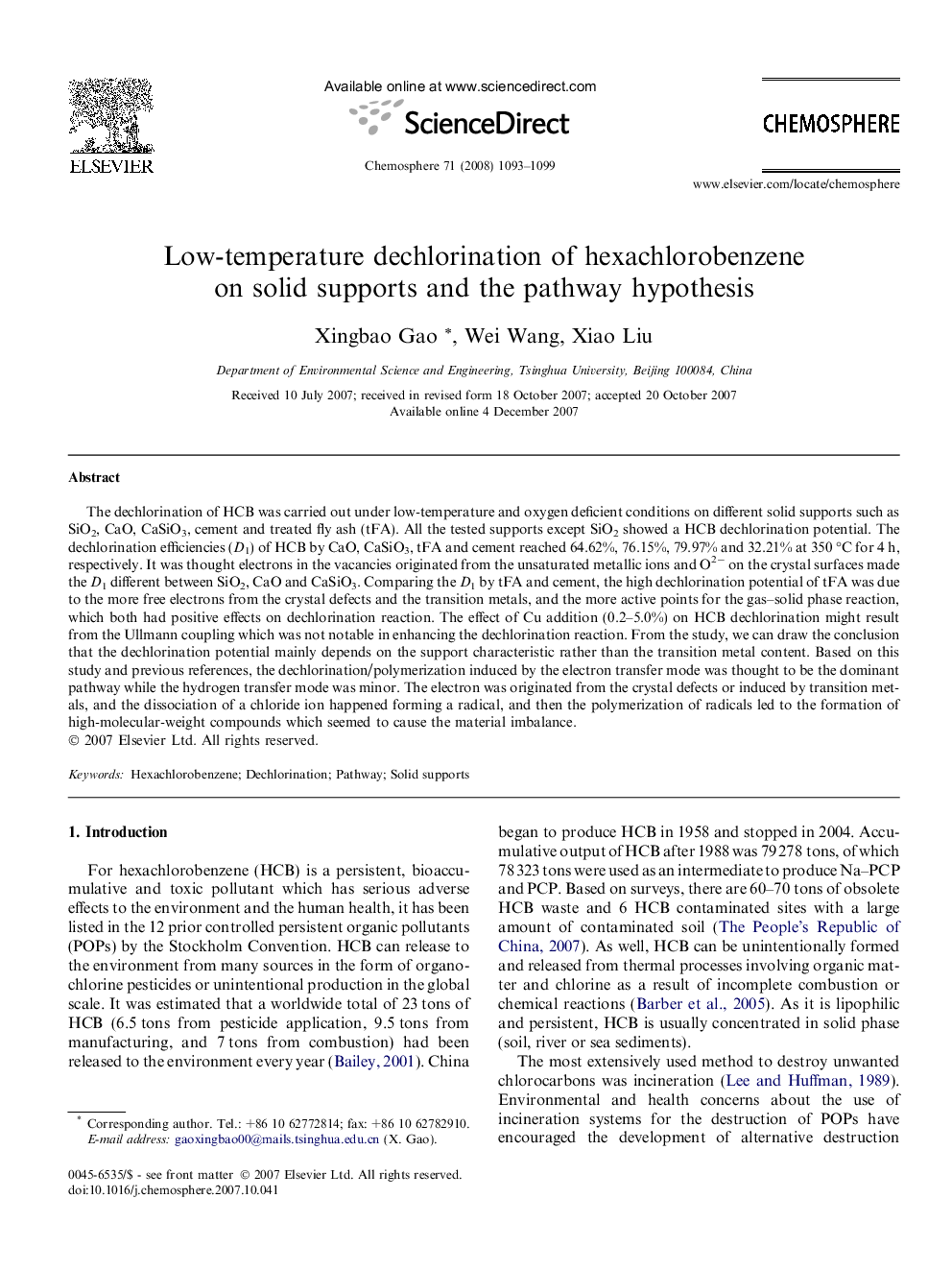| Article ID | Journal | Published Year | Pages | File Type |
|---|---|---|---|---|
| 4413787 | Chemosphere | 2008 | 7 Pages |
The dechlorination of HCB was carried out under low-temperature and oxygen deficient conditions on different solid supports such as SiO2, CaO, CaSiO3, cement and treated fly ash (tFA). All the tested supports except SiO2 showed a HCB dechlorination potential. The dechlorination efficiencies (D1) of HCB by CaO, CaSiO3, tFA and cement reached 64.62%, 76.15%, 79.97% and 32.21% at 350 °C for 4 h, respectively. It was thought electrons in the vacancies originated from the unsaturated metallic ions and O2− on the crystal surfaces made the D1 different between SiO2, CaO and CaSiO3. Comparing the D1 by tFA and cement, the high dechlorination potential of tFA was due to the more free electrons from the crystal defects and the transition metals, and the more active points for the gas–solid phase reaction, which both had positive effects on dechlorination reaction. The effect of Cu addition (0.2–5.0%) on HCB dechlorination might result from the Ullmann coupling which was not notable in enhancing the dechlorination reaction. From the study, we can draw the conclusion that the dechlorination potential mainly depends on the support characteristic rather than the transition metal content. Based on this study and previous references, the dechlorination/polymerization induced by the electron transfer mode was thought to be the dominant pathway while the hydrogen transfer mode was minor. The electron was originated from the crystal defects or induced by transition metals, and the dissociation of a chloride ion happened forming a radical, and then the polymerization of radicals led to the formation of high-molecular-weight compounds which seemed to cause the material imbalance.
